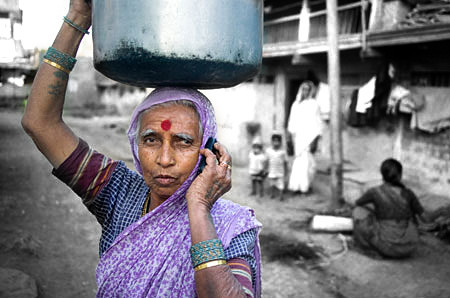Binu Zachariah an experienced market researcher from India gives his view on India’s economy and the rise of the new consumer. Zachariah also highlights why market researchers cannot adopt a universal market research approach in India and how multi-national corporations are triggering change in the market research process.

The much acclaimed Indian consumer market, the substratum on which India’s economic growth thrives on, is elusive in many respects. Underlying element of “diversity” in the social, cultural, economic, political and geographical milieus of India makes the market conditions challenging to the marketers.
This diversity is manifested in the mainstream Indian culture and the sub cultures, in addition to the distinct socio-economic and regional divide of this nation. Politically speaking, the federal union of Indian states divided on linguistic basis, contributed to the evolution of unique customs and traditions in each state or region in the country.
Despite of these diversities, India is expected to be transformed into one of the leading economies in the world within a couple of decades. Historically, the economic liberalization policy implemented by the government of India in 1991, marked the beginning of an unprecedented economic growth which was further intensified by the globalization of Indian business. Consequentially, the Indian market was transformed from traditional “seller’s market” to dynamic ‘buyer’s market- with multiplicity of product and service categories competing for customer’s share of wallet.
The growing middle class
This increase in Indian economic activities naturally led to creation of employment and business opportunities, which in turn resulted in a substantial rise in the disposable incomes of the people particularly, the middle class. The on-going evolution of middle class in India characterized by the proverbial “upward mobility” is a classic phenomenon which is worth watching out for!
Today an ever greater section of the Indian populous is making their entry into the middle class by virtue of their earning potential. With increasing disposable incomes, higher levels of aspiration and propensity for a better lifestyle - the middle class is the key beneficiary of majority of the products and services marketed in India. Considering the size of the country and its population, the market size for goods and services in India is huge and it is still growing!
Indian Consumers
Indian consumers are also evolving with the market - habits, lifestyles, tastes and preferences. The advent of organized retailing malls and multiplexes has transformed the shopping habits and purchase behaviour of the Indian consumer. Affluent and the upper middle class in India are generally brand conscious and their purchase decisions tend to be influenced by vanity and pride.
Interestingly, over 50% of India’s population, according to current estimates, are under the age of 25 and furthermore the majority of them are educated too. This generation that grew up in the post liberalization era are more receptive and adaptive to lifestyle changes.
Market Research in India
When it comes to undertaking market research studies in
India, researchers are confronted with a series of issues that prevent them
from applying a universal approach to the Indian market:
- The magnitude of population
- Rural- urban divide
- Linguistic segregation of states and regions,
- Diversity in popular culture, customs, traditions, lifestyles, social stratification
The diversity and enormity of India’s population and the absence of an updated and reliable sampling frame make it difficult to employ probabilistic sampling methods to conduct nation-wide studies. Additionally secondary data sources available in India are sometimes found to be outdated or inadequate.
The Indian market research industry is still in the evolutionary stage when compared to the modern MR methods and techniques used in developed countries. Market research practice in India are predominantly quantitative - traditional labour intensive field surveys being the most common form of research. However, qualitative research methods are gradually gaining ground. Online and mobile market research are not yet as popular, even though India has an internet subscriber base of over 100 million users and a mobile user base of 929 million.
With regard to the usage of marketing research, many Indian organizations use syndicated research data to assess the market standing of their brands against competitors. When compared to the western countries, the number of customized marketing research studies being carried out in India in a year, is abysmally low.
Many Indian managers are not fully convinced about the utility of marketing research findings in aiding strategic decision making, they attach more value to their past experience and gut feel while making tactical decisions. However, change seems inevitable. Multi-national corporations operating in India have already triggered the process of change in the Indian business ecosystem.
The Indian consumer market is vibrant, dynamic and very much open for business. The challenges call for innovative and pragmatic responses from the marketers.

